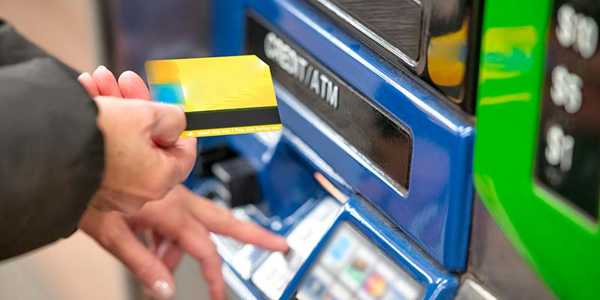12 SUVs automáticos usados imperdíveis a partir de R$ 55.000
Die beste Behandlung für eine Nasennebenhöhlenentzündung – Effektive Lösungen für Ihre Gesundheit
Melhores carros usados até R$ 20 mil para comprar em 2025
Como Ganhar Dinheiro Online: 19 Ideias de renda extra
How to Play the Dividend Reinvestment Game Like a Pro
Playing the dividend reinvestment game can be something other than a finance degree or a fancy suit. It's all about making your money work for you while keeping things simple. In this article, we'll break down the world of dividend reinvestment conversationally and straightforwardly so you can become a pro.
Playing the dividend reinvestment game can be something other than a finance degree or a fancy suit. It's all about making your money work for you while keeping things simple. In this article, we'll break down the world of dividend reinvestment conversationally and straightforwardly so you can become a pro.

Understanding the Basics
Let's start with the basics. Dividends are payments to companies from their partners/shareholders from their profits. When you own stocks in a company, you might receive these dividend payments regularly. So, how do you play this game like a pro? The answer is by reinvesting those dividends back into the same stock.
Choose the Right Stocks
Before reinvesting dividends, you need to have some stocks that pay dividends. Not all stocks do this, so you'll want to focus on dividend-paying companies. Look for well-established companies with a history of stable or growing dividends. Companies like Coca-Cola, Johnson & Johnson, and Procter & Gamble are known for their dividend-paying track record.
Open a Dividend Reinvestment Plan (DRIP)
You'll need a Dividend Reinvestment Plan, or DRIP for short, to reinvest your dividends. A DRIP is like your financial assistant, helping you automatically reinvest your dividends. You can usually set up a DRIP through your brokerage account or the company's transfer agent.
Once you have a DRIP in place, your dividends will be automatically used to buy more shares of the same stock. There is no need to worry about manually reinvesting each dividend payment.
Patience Is Key
Now that your DRIP is set up, you need patience. The magic of dividend reinvestment happens over time. Each time you receive a dividend, it's reinvested, which buys more shares. Over time, this snowballs, and your investment grows.
Imagine you own 100 company shares, and they pay a $1 dividend per share. If you reinvest that $100 back into the same stock, it buys you another 3-4 shares (depending on the stock's current price). Now, you have more shares, and the next time you get dividends, it's based on your increased share count.
The Power of Compounding
The actual pro move in the dividend reinvestment game is harnessing the power of compounding. Compounding is like a snowball rolling down a hill, gathering more snow. In this case, your money snowball gathers more money, making your investments grow faster.
Here's how it works: as you reinvest dividends, you get more shares. With more shares, you receive more dividends. Those extra dividends, when reinvested, buy even more shares, and the cycle continues. Over time, this creates exponential growth in your investment.
Example of Compounding
Let's break it down with an example. Say you invest $1,000 in a stock with a 5% dividend yield. In the first year, you'll get $50 in dividends. Instead of pocketing that $50, you reinvest it in the same stock.
The following year, you have more shares because of the reinvested dividends. This means your dividend payment is also higher. Assuming the stock's price remains the same, you get 5% of a higher share count. Let's say you now get $52.50 in dividends. You reinvest that, too.
This process continues yearly, and the dividends you receive keep growing. In 10 years, you earn hundreds of dollars in dividends annually, all from your initial $1,000 investment. That's the power of compounding.
The Tax Advantage
Dividend reinvestment also offers a tax advantage. In many countries, reinvested dividends are usually only taxed once you decide to sell the shares. This means you can let your investment grow tax-deferred, giving you more control over when you want to pay taxes on your gains.

Diversification and Risk Management
While focusing on a single stock can be a pro move, it's also crucial to consider diversification. Diversifying your investments means spreading your money across different stocks or asset classes to reduce risk. You can use dividend reinvestment to diversify your portfolio.
When your investments grow through reinvested dividends, you can use those funds to buy shares in other companies or investment types. This can help you manage risk while enjoying the benefits of dividend reinvestment.
Setting Goals
You should set clear goals to play the dividend reinvestment game like a pro. What are you aiming for? Are you looking to build a retirement fund, save for a big purchase, or create a source of passive income? Defining your goals will help you make informed decisions along the way.
Monitoring Your Investments
While dividend reinvestment is a hands-off strategy, keeping an eye on your investments is essential. Monitor the performance of the companies you've invested in and stay informed about any changes in your portfolio. It would help if you rebalanced your holdings occasionally to ensure they align with your goals.
Regular Contributions
If you want to accelerate your dividend reinvestment game, consider making regular contributions to your investment account. This can be a set amount of money you invest each month or quarter. Doing this will increase your position in the stock and, when combined with reinvested dividends, speed up your wealth-building process.
Staying Informed
To play the dividend reinvestment game like a pro, you don't need to become a financial guru, but staying informed is essential. Keep up with financial news and understand the fundamentals of your invested companies. This knowledge will help you make informed decisions and adapt to changing market conditions.
Final Thoughts
Dividend reinvestment is a simple yet powerful strategy for building wealth. You can grow your investments by choosing the right stocks, setting up a DRIP, and letting compounding work its magic. Stay patient, diversify, set clear goals, and monitor your progress.
Playing the dividend reinvestment game like a pro doesn't require a suit or a finance degree. It's about making intelligent choices and letting your money work for you. With consistency and discipline, you can turn your initial investment into a substantial source of passive income and financial security. So, start today and watch your wealth grow one dividend at a time.









